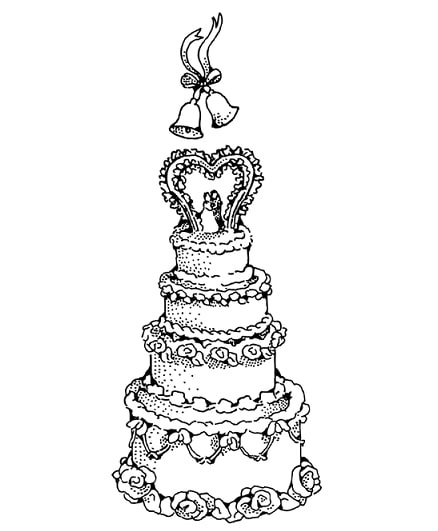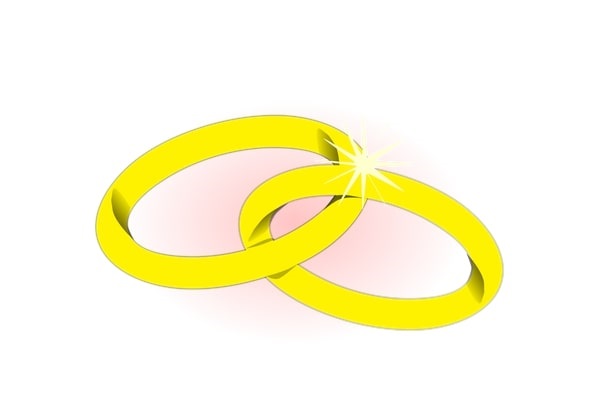Introduction: In this article, Gena Philibert-Ortega describes another good family history resource found in newspapers: notices about your ancestors’ application for a marriage license. Gena is a genealogist and author of the book “From the Family Kitchen.”
The intent to marry and the actual marriage event create vital records that provide the genealogist with information ranging from the bride’s and groom’s names, ages, and occupations to the names of their parents. While a marriage certificate comes immediately to mind when considering a marriage record, there are other marriage records, including marriage licenses, banns, and bonds. Types of marriage records can differ depending on the location and time period.
One type of marriage record – marriage licenses – are found largely after the U.S. Civil War and replace bonds, banns, or intentions. (1)

Marriage Licenses
A marriage license, issued by a government entity such as the county, provides information about the marrying couple. Once a marriage license was issued, if a wedding occurred, the marriage license was signed by the person officiating the ceremony and returned to the county, who then issued a marriage certificate.
Finding a marriage license is not a guarantee that the couple married. Depending on the location and era, a marriage license may have had to be secured days before the wedding. This “cooling off” period meant that those making a hasty decision might not go through with the ceremony. (2) Because of this, it’s important to remember that finding a marriage license does not automatically mean a marriage occurred – so you must also seek out the marriage certificate.
Examples of Marriage License Newspaper Notices
Newspapers often listed the names of vital statistic recordings. You may find your ancestor’s name amongst the couples who applied for a marriage license. You are most likely going to find marriage license announcements in 20th century newspapers. Remember, a couple may have married in a different county or state than where they lived. Newspapers provide an excellent opportunity to find these mentions when you have no other clue that a couple married far from home.
What does a newspaper article listing marriage licenses look like? Here are a few examples.
This 1940 Beaumont, Texas, list under the heading “Court Records” is sandwiched between other official dealings including real estate transfers and automobile licenses. This list shows the grooms’ and brides’ names.
Now, notice something different about this next marriage license notice, published a decade earlier in Beaumont, Texas. The grooms’ and brides’ names are listed as well as the city they live in. This list also includes a Notice of Intention to Marry. “[Intent to Marry] records were similar to banns but were filed with the town or county clerk.” (3)
This 1940 Columbus, Ohio, list includes the grooms’ and brides’ names, ages, occupations, and addresses. Notice that it’s in a column dedicated to the “Calendar of Events.” This is an excellent example of how searching by a street address is one alternative to searching on an ancestor’s name. It lists marriage licenses “Asked” and “Granted.”
This 1915 Chicago, Illinois, list includes initials for some of the grooms’ and brides’ first and/or middle names. This is a good reminder that searching by initials might uncover an elusive ancestor.
Next Steps
Once you find mention of a marriage license in the newspaper, what do you do next?
You’ll want to start searching for marriage records through online sources such as FamilySearch.
If the record isn’t online, contact the county recorder’s office or nearby archive to find the marriage license application and/or certificate. The newspaper’s marriage license application notice might help you locate the actual document since you now know the date they applied for that license (remember, that license could have been obtained on the day of the marriage or several days prior).
Explore over 330 years of newspapers and historical records in GenealogyBank. Discover your family story! Start a 7-Day Free Trial
Note on the header image: drawing of wedding rings.
____________________
(1) “Marriage Records,” RootsWeb Family History Wiki (https://wiki.rootsweb.com/wiki/index.php/Marriage_Records#Marriage_Licenses: accessed 8 October 2021).
(2) States with Gin Marriage Laws required a 3-day waiting period between acquiring the license and getting married. You can learn more about this from the GenealogyBank Blog article, “Gin Marriages, Gretna Greens, and Your Ancestor’s Marriage Records”: https://blog.genealogybank.com/gin-marriages-gretna-greens-your-ancestors-marriage-records.html
(3) “Marriage Records,” RootsWeb Family History Wiki (https://wiki.rootsweb.com/wiki/index.php/Marriage_Records#Marriage_Licenses: accessed 8 October 2021).
